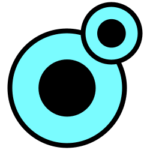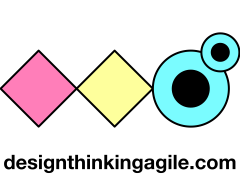
The DTA Innovation Framework
The DTA innovation framework simplifies design thinking and agile techniques into three easily understandable focus areas of problem, solution, product, to help individuals, teams and organization’s create and deliver user-centered products and services in the shortest possible time. Through the framework, we teach the techniques that will unlock product and service innovation for you, your team and organization.

Discover
The Discover phase involves thorough research, problem exploration, and user understanding. It aims to identify challenges, gather insights, and define opportunities, setting the foundation for innovative solutions. This phase encourages divergent thinking and empathy, crucial for framing the design problem effectively.
Define
In the Define phase insights from the Discover phase are synthesized to define a clear problem statement. This step helps focus efforts on a specific user challenge and lays the groundwork for generating and evaluating potential design solutions in the subsequent phases.
Right Problem
Techniques specified by the DTA Framework 1.0 help individuals, teams and organizations discover and define the right user problem to solve.
Final Problem
A final problem is a refined, well-defined challenge that encapsulates the core issue to be solved. It emerges after thorough research and exploration, guiding the design process. Addressing the final problem with innovative solutions ensures a focused and effective approach to creating user-centered designs.
Develop
During the Develop phase ideas from the Define phase are transformed into concrete design concepts. Through iterative prototyping, testing, and refinement, viable solutions are crafted. This phase emphasizes collaboration and creativity, leading to tangible and user-centered prototypes ready for further evaluation and iteration.
Deliver
The Deliver phase involves finalizing and implementing the refined design solution from the Develop phase. It encompasses detailed execution, production, and delivery of the product or service. This stage ensures alignment with user needs and project goals, resulting in a polished and effective end result.
Right Solution
Techniques specified by the DTA Framework 1.0 helps individuals, teams and organizations develop and deliver the right solution.
Build Solution
Building a solution involves creating tangible prototypes or conceptual models that address the identified problem. This iterative process encourages creative experimentation and refinement, allowing designers to test ideas, gather feedback, and iterate to develop a practical and effective solution that meets user needs and aligns with project goals.
Deploy
Continuous Deployment is a software development approach where code changes, after passing automated tests, are automatically and frequently deployed to a production environment. This enables rapid and consistent delivery of new features and updates, promoting agility, reducing manual intervention, and ensuring a streamlined release process.
Right Product
Techniques specified by the DTA Framework 1.0 helps individuals, teams and organizations deploy the right product through iteration and continuous integration.
Iterate
Continuous Iteration is an ongoing process of refining and enhancing a product or project through repeated cycles of planning, development, testing, and adjustment. It embraces feedback and evolving requirements, allowing for incremental improvements and adaptations over time, ensuring the delivered outcome remains aligned with goals and user needs.
Integrate
Continuous Integration is a development practice where code changes are regularly integrated into a shared repository. Automated build and testing processes ensure early detection of errors. This approach enhances collaboration, identifies issues promptly, and streamlines development, leading to more reliable and efficient software delivery.
Launch Product
Launching a product is the final stage where the developed solution is introduced to the market or users. This phase involves executing a well-planned release strategy, monitoring user feedback, and iterating based on real-world usage. Successful product launch validates design decisions and delivers value to users.
Competitive Advantage
Determining competitive advantage involves identifying unique qualities or features of a product or service that set it apart from competitors. Through user research and analysis, design thinkers pinpoint strengths that resonate with users, allowing strategic positioning in the market and enhancing the product's attractiveness and success.
Problem
DISCOVER AND DEFINE THE RIGHT PROBLEM.

The Problem focus area equips individuals, teams and organizations with the techniques to discover the users’ problems through qualitative and quantitative data collection, culminating in a final problem that is well-defined and can be addressed with potential solutions.
Solution
DEVELOP AND DELIVER THE RIGHT SOLUTION.

The Solution focus area equips individuals, teams and organizations with the techniques to develop ideas to address the problem, testing assumptions through rapid prototyping and iteration before a solution feels right to build.
Product
BUILD AND DEPLOY THE RIGHT PRODUCT.

The Product focus area equips individuals, teams and organizations with the techniques to build and deploy the product within their agile framework, through iteration and continuous integration.

“Well-rounded, forward-thinking, innovative, sharp, and extremely efficient.”
— Head of HR

“A solid coach and sparring partner, ready to understand the situation and help pair theory with reality to find good solutions.”
— Product Owner

“Instrumental in bringing agile practices to our team and maturing agile across the department.”
— Head of Analytics
